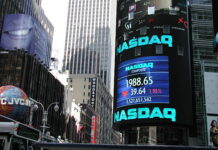US indices rallied yesterday, in an effort to recover a part of the past few session losses, rather than a fresh move, on fresh news, as there was no fresh news yesterday.
But yesterday’s jump in US indices was relatively strong, perhaps due to thin trading volumes that make look the year-end moves impressive, while they are not.
Anyway, the S&P 500 gained 1.75% yesterday, and could maybe finish the year with less than a 20% loss, while Nasdaq jumped more than 2.50%, but will still end the year with more than a 30% drawdown.
Things have changed so much in one year!
The pivot
Remember, last year at this time, we were about to see Apple become the world’s first $3 trillion company. The S&P500 and Nasdaq were running from record to record, and no one imagined how bad the hangover would be.
We didn’t know it at that time but the 2022 bear market officially kicked off just a couple of days after the year started, when the first FOMC minutes release of the year showed that the Federal Reserve (Fed) was no kidding about the rate hikes, and that the financial conditions would get real tighter over the year.
And man, they got tighter… way tighter than we expected a year ago, with the Fed raising its interest rates 425bp starting from March.
As a result, Apple lost a third of its value, Amazon lost half of its valuation since the beginning of the year and, this month, became the first US big cap to lose more than $1 trillion in valuation. Netflix lost up to 75% of its value compared to November 2021 peak, and Facebook scraped 77% of its value since September 2021 peak.
It has been a terrible year for chipmakers as well. Nvidia, one of the most promising and hyped chipmakers in the US has also lost half of its valuation as, on top of slowing post-pandemic demand, the US blocked exports to the fructuous Chinese market.
And last but not least, Tesla contributed greatly to the fall of the S&P500, losing almost half of its valuation only since the start of the year. And the share price is down by more than 70% since its November 2021 peak, as Elon Musk made the headlines again this year, but not for good reasons. Twitter has in fact taken a huge toll on man’s reputation. 2022 hasn’t been his year.
A bad year
In reality, 2022 hasn’t been the year of no one, I guess. A was started in Ukraine as soon as end February and wreaked havoc in the markets. The Western nations imposed sanctions on Russia in March. Ruble lost half of its value against the dollar at the wake of its first attack in Ukraine, but only to close the year flat, and even slightly stronger against the dollar compared to before the war, as the skyrocketing oil prices filled the country’s coffers.
Oil on the other hand soared to $130pb at the wake of Russia’s first attacks on Ukraine. We had all kind of speculation that it would rally to the $180-200pb area. But Thank God that didn’t happen. We are preparing to end the year below $80pb instead, as the recession fears took a toll on bullish bets.
But energy stocks had a great year. Exxon Mobil, Chevron, BP, Shell did so great that the desperate Western governments watching inflation cause a huge cost of living crisis decided to impose windfall taxes on these companies who announced jaw dropping earnings throughout the year and Exxon ended up suing the EU for this decision just a couple of days ago.
While all this was happening, the US’ national debt went above the $30 trillion mark.
But the US dollar gained, as the Fed raised rates. Others raised rates as well, but the dollar kept rising.
Cryptocurrencies saw massive outflows, and the outflows revealed the cracks in the system, causing the collapse of the major institutions like Terra Luna, and FTX lately.
And gold hasn’t been great in tempering inflation, but at the end of the year, and despite the soaring yields, the yellow metal managed to recover yearly losses, and is even preparing to end the year around 1% higher than where it started in US dollar terms.
So voilà. Everything looked ugly this year, except for energy and the US dollar.
The major take of 2022
The most important take of the year is: the era of easy money ended, and ended for good. It means that the financial markets won’t look like anything we knew since the subprime crisis.
This is the beginning of a new era, when central banks will be playing a more subdued role in the markets, with less liquidity available to fix problems – a more than necessary move that came perhaps too late, and too painfully.
And given that there is still plenty of cheap central bank liquidity waiting to be pulled back, the situation may not get better before it gets worse in the first quarters of next year. Recession, inflation, stagflation will likely dominate headlines next year.
Happy New Year!












